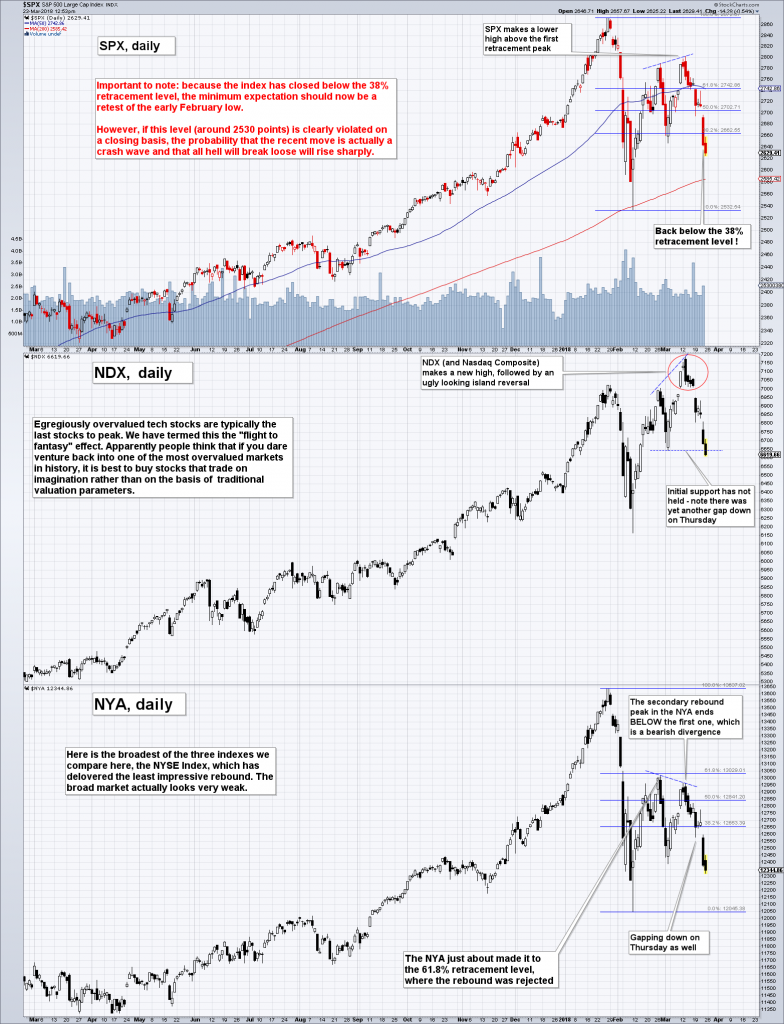SPX, Quo Vadis? Considering the Crash Potential
In view of the fact that the stock market action has gotten a bit out of hand again this week, we are providing a brief update of charts we have discussed in these pages over the past few weeks (see e.g. “The Flight to Fantasy”). We are doing this mainly because the probability that a low probability event will actually happen has increased somewhat in recent days.

Robert Taylor and Deborah Kerr cast wary glances at their ancient (modern at the time) pre-Ogygian deluge Quotron. This sucker is going down honey!
This idea is mainly based on just a few technical data points. We concede these are not ”fully confirmed” at this stage, as a number of normally expected inter-market warning signals remain by and large absent. Nevertheless, pilgrims, we cannot ignore what looks like a potentially dire development – regardless of whether or not the stock market ends up bouncing today.
So here is an update of the comparison chart of three important benchmark indexes we posted earlier this week, including a few new annotations which take the most recent moves into account:

SPX, NDX, and NYA – this looks ever more dangerous to us. The eerie similarities with several historical crash scenarios should not be dismissed lightly. That said, crashes are always low probability outcomes, so the default expectation should, of course, be that a retest is on its way. One has to be wary though.
The next chart is an update of the internals we have recently shown – particularly noteworthy, the new high/new low percentage index (HLP), which has just issued a new sell signal and is still far from “oversold”:

A new sell signal as the NH/NL percentage index (HLP) sinks below the zero line again. Nothing is sufficiently “oversold” yet. Note: there was no a/d line divergence at the peak, which we usually see at major turning points. However, such a divergence does not always happen – e.g. there was no a/d line divergence in 1937 either (along similar lines, margin debt peaked after rather than before the market top in that fateful year).














Leave A Comment